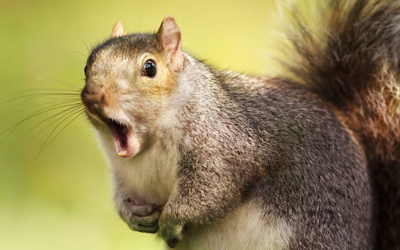 Squirrels may seem harmless, but their presence in your home can lead to significant damage and disruption. These agile critters often seek shelter in attics, walls, and even basements, causing issues with insulation, wiring, and more. To protect your home from these pesky intruders, it’s essential to take proactive measures to squirrel-proof your property. At AAA Kyles Wildlife Removal, we’re here to provide you with practical advice on how to keep squirrels out and ensure your home remains secure.
Squirrels may seem harmless, but their presence in your home can lead to significant damage and disruption. These agile critters often seek shelter in attics, walls, and even basements, causing issues with insulation, wiring, and more. To protect your home from these pesky intruders, it’s essential to take proactive measures to squirrel-proof your property. At AAA Kyles Wildlife Removal, we’re here to provide you with practical advice on how to keep squirrels out and ensure your home remains secure.
1. Seal Entry Points
- Inspect Your Home: Regularly examine your home’s exterior for potential entry points that squirrels might exploit. Look for gaps, cracks, or holes in the roof, walls, and foundation.
- Use Durable Materials: Seal any identified entry points with materials that are resistant to gnawing, such as steel mesh or hardware cloth. Squirrels have strong teeth and can chew through softer materials like wood or plastic.
- Repair Vents and Chimneys: Ensure that vents, chimneys, and other openings are covered with sturdy, squirrel-proof grates or screens to prevent entry.
2. Secure Food Sources
- Store Food Properly: Keep birdseed, pet food, and other food sources in squirrel-proof containers with tight-fitting lids. Avoid leaving food outside or in easily accessible areas.
- Manage Compost Bins: If you use compost bins, ensure they are squirrel-proof and properly sealed. Squirrels are attracted to compost because of the food scraps it contains.
- Clean Up Debris: Regularly clean up any fallen fruit, nuts, or other food sources from your yard that may attract squirrels.
3. Use Deterrents
- Install Motion-Activated Devices: Use motion-activated sprinklers or lights to deter squirrels from approaching your home. These devices can startle and discourage them from getting too close.
- Apply Natural Repellents: Consider using natural repellents like peppermint oil or hot pepper spray around potential entry points. Squirrels dislike strong odors and tastes that can act as effective deterrents.
- Create Physical Barriers: Install squirrel baffles on bird feeders and trees to prevent squirrels from accessing these food sources. Squirrel-proof feeders with cages can also help.
4. Maintain Landscaping
- Trim Trees and Shrubs: Keep trees and shrubs well-trimmed and away from your home’s roof and walls. Squirrels often use overhanging branches to jump onto your roof or gain access to your home.
- Use Landscaping Features: Consider using landscaping features like gravel or stone barriers around the foundation of your home to make it more challenging for squirrels to climb.
5. Regular Inspections
- Schedule Professional Inspections: Regularly inspect your home for any signs of squirrel activity or potential vulnerabilities. Professional wildlife removal services can help identify and address issues that may not be immediately visible.
- Address Issues Promptly: If you notice any signs of squirrel activity or damage, address the problem as soon as possible to prevent further issues.
Taking proactive steps to squirrel-proof your home can save you from the hassles and potential damage caused by these agile critters. For more expert advice and professional assistance with wildlife removal, contact AAA Kyles Wildlife Removal.
